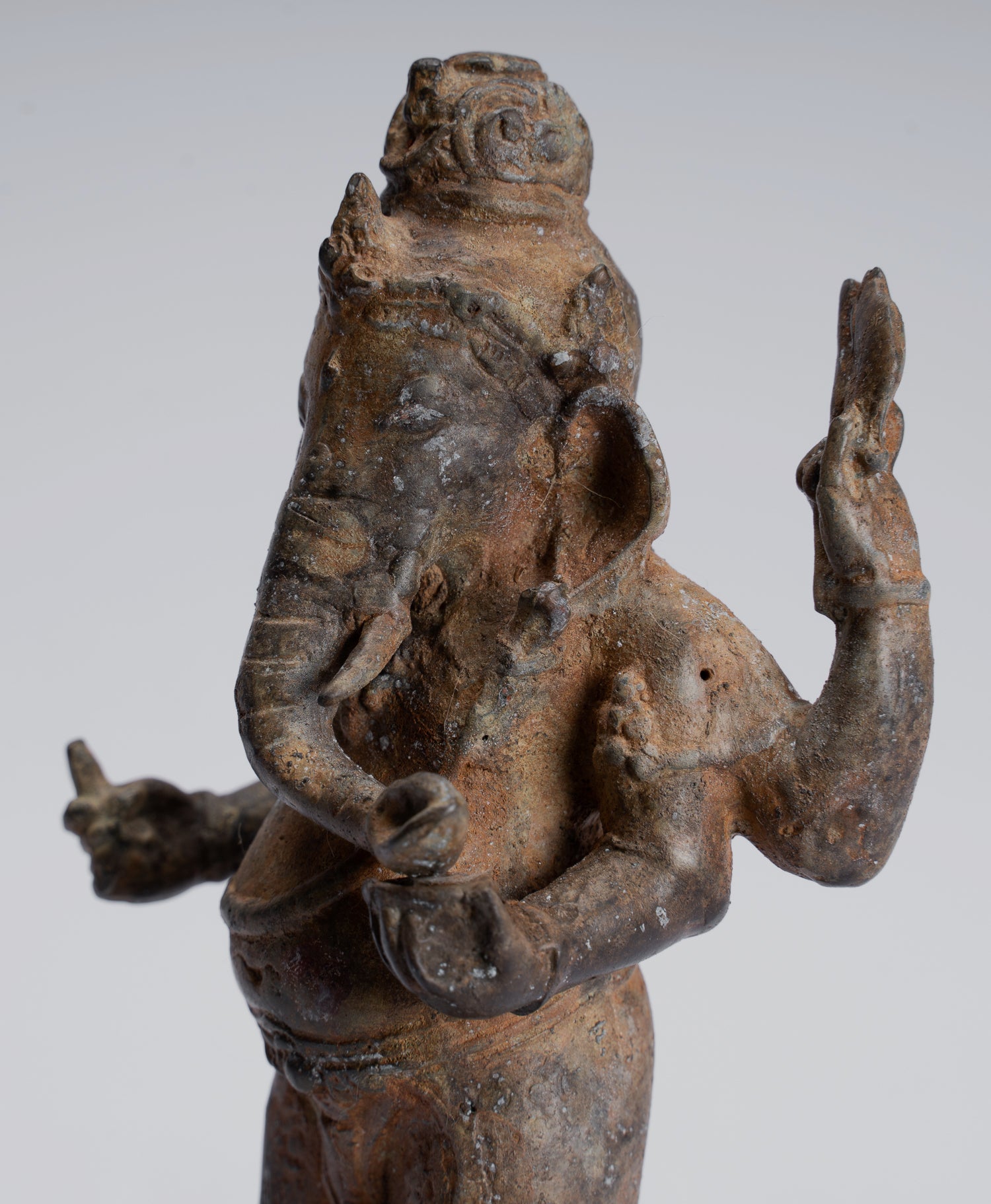
The Rise of Ganesha in Indonesia: A Journey Through Faith and Culture
In the heart of Southeast Asia, Indonesia stands as a country where ancient traditions and modern beliefs coalesce in fascinating ways. Among its rich cultural and religious tapestry, the Hindu deity Ganesha, known as the Remover of Obstacles and the God of Wisdom, has played a significant role.
Despite Indonesia being the world’s largest Muslim-majority nation today, Ganesha’s influence endures, especially in regions like Bali and through the country’s Hindu-Buddhist past.
This blog delves into the rise of Ganesha in Indonesia, exploring his origins, integration into local cultures, and lasting legacy.
Historical Context: The Spread of Hinduism to Indonesia
1. Indian Influence in Ancient Indonesia
The story of Ganesha in Indonesia begins with the arrival of Indian merchants, scholars, and priests between the 1st and 5th centuries CE. Through trade and cultural exchange, Hinduism and Buddhism spread to the Indonesian archipelago, profoundly influencing local societies.
- Indianized kingdoms like Tarumanagara, Kutai, and later Majapahit and Singhasari adopted Hindu-Buddhist belief systems.
- Alongside major Hindu gods like Shiva, Vishnu, and Brahma, Ganesha became a prominent figure in the religious and political life of these early kingdoms.
2. The Role of the Majapahit and Singhasari Empires
The Majapahit Empire (1293–1527 CE) and its predecessor, the Singhasari Kingdom, were crucial in the proliferation of Ganesha worship in Indonesia. These empires, which blended Hinduism and Buddhism, regarded Ganesha as a deity of wisdom and protection.
- Ganesha’s association with Shiva, a central figure in these kingdoms, solidified his importance.
- His role as the Remover of Obstacles was particularly significant for rulers who sought his blessings for political stability and success in governance.
Ganesha in Indonesian Art and Iconography
Indonesian representations of Ganesha reflect both Indian influences and distinctive local styles, showcasing the rich artistry of the archipelago.
1. Iconography of Ganesha in Indonesia
Ganesha is typically depicted with his characteristic elephant head and potbelly, but his portrayal in Indonesia has unique features:
- Seated Postures: Ganesha is often shown seated in a relaxed posture, holding traditional attributes such as the modaka (sweet), broken tusk, and axe.
- Local Adaptations: In some depictions, Ganesha wears traditional Indonesian attire, including elaborate sarongs and jewelry, blending Indian and local styles.
2. Ganesha in Temple Art
Many ancient temples across Java and Bali feature carvings and statues of Ganesha, underscoring his significance in religious rituals and royal ceremonies.
- Prambanan Temple: This iconic 9th-century Hindu temple complex in Central Java, dedicated to the Trimurti (Brahma, Vishnu, and Shiva), includes a shrine to Ganesha as part of the Shiva temple.
- Candi Panataran: Located in East Java, this temple complex from the Majapahit period features Ganesha statues that highlight his role as a deity of learning and prosperity.
Ganesha’s Role in Indonesian Society
Beyond temples and iconography, Ganesha played an essential role in the daily lives of Indonesians, particularly during the Hindu-Buddhist era.
1. Protector of Knowledge and Wisdom
Ganesha was revered as a patron of learning, with scholars and students seeking his blessings for wisdom and intellectual growth.
- Inscriptions from the Tarumanagara Kingdom mention Ganesha as a deity associated with learning and statecraft.
- He was also invoked in royal courts as a guide for just and wise governance.
2. Remover of Obstacles for Traders and Sailors
As a maritime nation, Indonesia relied heavily on trade, and Ganesha’s role as the Remover of Obstacles made him an important figure for merchants and sailors. Offerings to Ganesha were common before embarking on long voyages, seeking safe passage and successful ventures.
Decline and Resurgence: Ganesha in Modern Indonesia
1. Decline of Hinduism and Ganesha Worship
The arrival of Islam in the 13th century gradually shifted Indonesia’s religious landscape. By the 16th century, Islam had become the dominant religion across most of the archipelago, and the worship of Hindu deities like Ganesha diminished.
- However, Hinduism remained vibrant in Bali, where Ganesha continued to be a central figure in religious practices.
2. Ganesha in Contemporary Indonesia
Today, Ganesha enjoys a resurgence, both as a religious figure and a symbol of Indonesia’s cultural heritage.
- In Bali: Ganesha is widely worshipped in temples and homes, with ceremonies and offerings made to him for blessings of wisdom, prosperity, and protection.
- In National Symbols: Ganesha has transcended religious boundaries to become a cultural icon. For example, Gadjah Mada University, one of Indonesia’s most prestigious institutions, uses Ganesha as its symbol, reflecting his association with wisdom and learning.
Ganesha’s Broader Influence in Indonesia
Ganesha’s influence extends beyond religious and academic contexts, permeating various aspects of Indonesian society.
1. Art and Popular Culture
Ganesha’s image frequently appears in traditional crafts, paintings, and sculptures, showcasing the enduring appeal of his form. In recent years, his iconography has also inspired modern art and design, blending tradition with contemporary aesthetics.
2. Tourism and Heritage Preservation
Sites associated with Ganesha, such as temples and ancient ruins, attract tourists and scholars alike, contributing to Indonesia’s cultural tourism sector. Efforts to preserve and promote these sites underscore their historical and spiritual significance.
Conclusion
The rise of Ganesha in Indonesia is a testament to the country’s rich history of cultural exchange and religious diversity. From his early introduction during the Hindu-Buddhist era to his continued veneration in modern Bali and beyond, Ganesha remains a powerful symbol of wisdom, prosperity, and resilience.
His enduring presence in Indonesian art, education, and popular culture highlights the timeless relevance of his attributes, reminding us of the universal quest for knowledge and the removal of obstacles on life’s journey.
As Indonesia continues to embrace its multifaceted heritage, Ganesha stands as a bridge between past and present, embodying the values that have shaped the nation’s identity for centuries.


